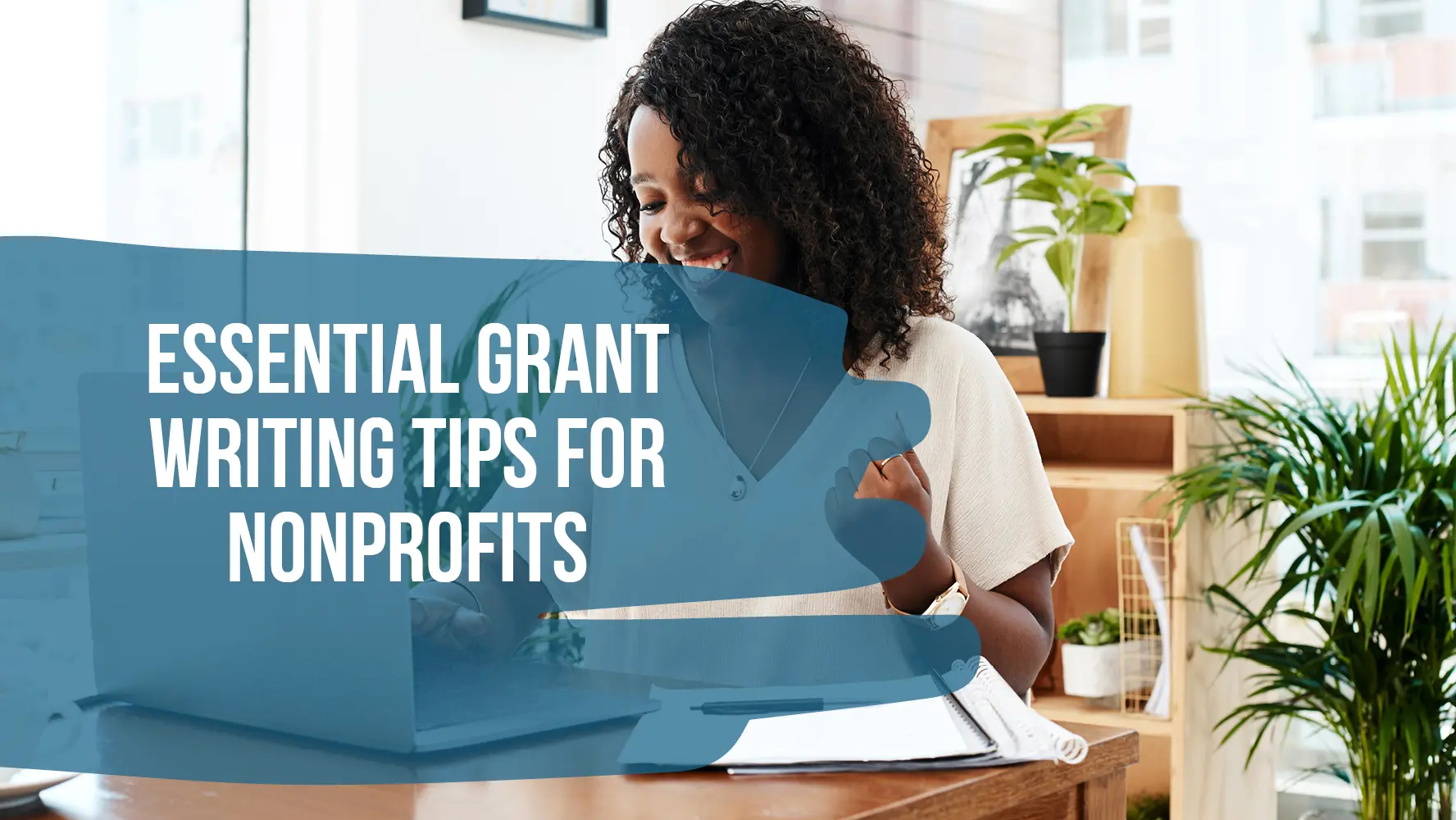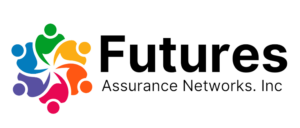
The tips, the dos, and the don’ts of successful nonprofit grant writing.
You have the mission. You have the organization. You have a vision for bringing positive change in a way that’s unique to nonprofits.
Now, you need the funding.
This is where grant writing comes into play. This endeavor is crucial to the survival and success of most nonprofits. However, winning grant funding can be highly competitive, especially when a grant writer requests support for a new program or organization for the first time.
One of the biggest challenges with grant writing is that virtually every funder wants something different from a grant proposal. While most funders want to see the same core elements in a proposal, their hopes and expectations regarding narrative configurations, space limitations, and proposal formats can vary greatly.
To help improve your grant-writing efforts, we’ve compiled a list of practical grant-writing tips:
- What Is Grant Writing?
- Professional Grant Writing Tips
- Nonprofit Grant Writing Dos & Don’ts
- Additional Nonprofit Grant Writing Resources
One of the most important things to remember when writing your grant is that there needs to be a formula to follow. You’ll need to customize your approach for each funder you pursue. The following advice will put you on your way to winning vital grant funding. So, if you’re ready to take your grant-seeking plan to the next level, let’s get started!
What is Grant Writing?
Grant writing is the process of applying for funding provided by a private, corporate, or government grantmaker.
Nonprofit organizations write and submit grant proposals to ask for financial or in-kind support. In addition to crafting a compelling proposal, the grant writing process also involves:
- Researching possible grants.
- Connecting with funders.
- Maintaining grant calendars.
- Managing active grant proposals.
- Reporting on how grant funding was used.
Who Writes Grant Proposals?
Nonprofit organizations typically form a team of grant writers, development coordinators, fundraising directors, executive directors, board members, and other stakeholders such as staff and community members to handle their grant writing.
In addition to in-house teams, many nonprofits partner with external grant writers and fundraising consultants who can offer grant-specific experience and expertise, allowing nonprofits to focus their time and resources elsewhere.
What Goes Into a Grant Proposal?
While every grant proposal is unique, most will contain a standard set of elements to meet criteria set forth by the funder. If you’re planning on writing a grant proposal, you should familiarize yourself with the following sections, which are typically included:
- Introduction/Abstract/Executive Summary—This is typically a brief overview of the proposal that includes general information about your organization, your ability to complete the proposed project, and a demonstrated need.
- Organizational Background – This provides additional information about your organization, its mission, location, and demographics to establish credibility in the eyes of the funder.
- Problem Statement/Needs Assessment – This states the problem your project plans to address using precise data and should align with the funder’s mission and goals.
- Program Goals and Objectives – This identifies the anticipated outcomes and benefits of the proposed project for which you seek grant funding.
- Methods and Activities—This details the activities, timeline, and key staff that enable your organization to meet the project goals and objectives.
- Evaluation Plan – This explains your plan for assessing and measuring the success of your project.
- Budget/Sustainability – This demonstrates how the funding will be allocated, stepped down once it ends, and how it fits into your organization’s larger financial plan. You may also be asked to include specific financial documents, such as an IRS Form 990.
You may be asked to include additional attachments and these core components in your grant proposal. Before submitting your grant proposal, it’s essential to read all of the funder guidelines and criteria to ensure its completeness.
How Do You Write a Grant Proposal?
Once you’re ready to get going on writing your grant proposal, there are some proven steps you’ll want to follow to make sure you’re covering all your bases:
- Meet with stakeholders to align on funding goals – You’ll want to develop a specific, actionable plan that provides a blueprint of what you want to do and why you want to do it.
- Determine which funder or funders you’re pursuing. Be sure to identify funders who are connected to your organization or have a history of funding projects similar to yours.
- Research the granting organization and criteria – Familiarize yourself with the funder’s proposal guidelines, its giving history, sample proposals from your peers, and the funding organization itself.
- Create a rough draft – Integrate the information you’ve gathered and organized in the first three steps, and write an initial draft of your grant proposal.
- Collect feedback from stakeholders—After sharing the rough draft with your internal team, ask for their thoughts and insights on suggested revisions.
- Revise, perfect, revise, perfect – Using the feedback from your team, revise and edit your proposal. You’ll want to go through multiple rounds of feedback and revisions before finalizing and submitting your proposal.
Above all, no matter how customized your proposal needs to be, remember that what a grant funder wants to see are answers to these critical questions:
- What does your organization need the funding for?
- What difference will the funding make in realizing your project?
- Where does the funder fit in?
Keep these questions at the top of your mind no matter where you’re in the grant writing process.
Tips for Writing a Successful Grant Proposal
Understanding how best to appeal to funders with your grant proposal is a critical first step to securing funding for your organization.
By putting in the time now to learn these best practices, you’re not only improving your chances to secure funding, but you’ll also avoid the pitfalls that could leave a wrong impression of your organization with funders and weaken your chances well into the future.
Generally, remember that good grant writing is good writing.
To create the most convincing ask, you’ll need to:
- Tailor your proposal
- Communicate your message clearly
- Convey a compelling core idea
- Write to persuade
Let’s take a closer look at how each of these components of successful nonprofit grant writing can improve your chances of securing funds for your organization’s cause.
Tailor Your Grant Proposal
There’s a common saying in the grant-seeking world: “If you’ve met one funder, you’ve met one funder.”
Translation? Every grant-seeking opportunity is unique and should be treated as such.
Requesting grant dollars can be intimidating, especially if you’re new to the grant-seeking process. But it’s important to remember that there’s no one-size-fits-all approach to requesting grant dollars. Don’t create one generic proposal and “shop it around.” Instead, you need to tailor each proposal you write. Here’s how:
- Tailor the Format – Every funder has different instructions for composing and submitting a grant request. Make sure that your application follows every guideline, even if you have an existing, solid relationship with the funder. If you cut corners when going for a grant opportunity, your proposal can be rejected.
- Tailor the Message – Funders don’t simply want to hear about your project and goals; they want to see a unique alignment between your organization’s mission and its values and priorities. You need to articulate this alignment in the cover letter, introduction, and conclusion of the narrative.
Remember, funders don’t exist to fund your organization’s mission. They exist to fulfill their missions by supporting philanthropic initiatives and organizations with which they align.
Tailoring your proposal is a necessary first step in showing each funder that they’ve been heard and that your organization can be trusted, putting you one step closer to securing the grant.
Communicate Ideas Clearly
One of the most common mistakes with grant writing, especially when you’re under pressure, is communicating your points in ways that make sense to those directly involved with your organization rather than to outsiders.
And for your grant proposal, the funders you’re appealing to are outsiders.
This is why, while it can be tempting to skimp on the review and revision process to save time, taking a step back and considering how you’re communicating your ideas is essential.
Make it a part of your grant writing discipline to communicate complex ideas, review and revise, write for external audiences, and be straightforward and compelling. Here’s how:
- Think Before You Write – Have a plan and clarify precisely what you’re asking for before putting it on paper.
- Use Familiar, Conversational Words – Don’t use pretentious words or fluffy jargon, as these can bog down the reader.
- Limit Sentences to a Single Idea – Use several short sentences to make individual points instead of a single, overly complex one.
- Write in “Active” Voice – Active voice is when the subject acts. For example, “The Board approved the request” instead of “The request was approved by the Board.”
- Use Transitions – Transitions help link ideas, arguments, paragraphs, and sections instead of abruptly jumping to a new topic.
- Make it Easy to Read—Use signposts like headings, lists, and bullet points to help the reader navigate the content.
Communicating your ideas using these tips will make the reader’s job easy, which should be a top goal for every grant proposal you write.
Convey a Core Compelling Idea
Think about the great stories you’ve ever read. Odds are part of what makes it great, and it is a core, compelling idea that serves as the overarching theme. That’s what sticks with readers. It’s no different with your grant proposal.
You’ll want to present an idea that clarifies how your organization’s work is essential, urgent, unique, and deserving of funding. While this may be simple to understand, making that presentation compelling is challenging.
A significant first step is defining the core, compelling idea that will distinguish your organization from others seeking grants. Keep it simple and memorable while capturing the reader’s attention with potent language.
Your core, compelling idea should reflect what the grant funder cares about. For example, if you’re seeking funds from a local community foundation, make your core compelling idea focus on the unique impact your project will have on the local community. After reading your grant proposal, readers should be able to clearly understand and remember what type of difference your organization plans to make.
By anchoring your nonprofit grant proposal around a core, compelling idea, you’ll stand a better chance of being remembered and standing out from the competition.
Write to Persuade
Writing a winning grant proposal is about more than informing. It should also inspire. It’s your job to create a proposal encouraging and persuading readers that your organization is worthy of funding. It should convince the reader that your organization is planning to address an urgent need, is staffed by qualified professionals, and has achievable goals.
Writing to persuade begins with remembering you’re writing for a natural person who brings human logic and emotions. Consider using these modes of persuasion to convince your reader:
- Ethos: The Gut – Ethos is an appeal to ethics. Persuade your reader that your organization is competent and credible by including impressive credentials, awards, and qualifications.
- Logos: The Head – Logos is an appeal to logic. Use well-supported facts, data, and testimonials through bulleted lists, graphs, and factoids/iconography to demonstrate your valid claims.
- Pathos: The Heart—Pathos is an appeal to emotion. Make your proposal gripping and memorable by using real-life examples of your organization’s impact, vivid imagery, and powerful quotes.
At its best, your grant proposal will appeal to the reader’s gut, head, and heart. If nonprofit grant writing isn’t your strong suit, consider the Grants Plus team, which includes experts who can pinpoint potential funders and craft powerful proposals.
Nonprofit Grant Writing Dos and Don’ts
Grant seeking is highly competitive. By learning the misconceptions surrounding grants and using the following dos and don’ts as a guide, you’ll position yourself to stand out from the competition—even if you’re new to nonprofit grant writing.
DO: Get a Green Light to Apply
Wasting time, energy, and resources is never a good thing. Especially when it comes to your grant-seeking efforts, it’s essential to research every funder’s current priorities and restrictions before starting to make sure they’re a good match for your proposal.
Grantmakers’ areas of focus and the types of funding requests they’re most likely to approve are constantly changing. So, making sure you’re up to date on their current focus early on means you will save time tailoring a proposal that’s likely to be rejected upon arrival.
Don’t: Submit a Grant Application “Cold”
Submitting a “cold” proposal in grant seeking is like making a “cold call” in sales—the odds of success are much lower. So, before submitting your grant proposal, cultivate a relationship with the funder.
Do some research and see if there’s a pre-existing connection between a person there and a member of your team. And if you don’t have a connection, create one. Consider calling the funder to introduce yourself and your organization. Taking a few simple steps at outreach can go a long way in warming up the funder and starting your engagement on a winning foot.
DO: Match the Foundation’s Funding Period
The last thing you want to do is write a worthy and winning grant proposal only to have it rejected because it wasn’t submitted within the foundation’s funding period.
Just like foundations have guidelines for what goes into your grant proposal, they also have rules for when it can and can’t be submitted. Confirm each grantmaker’s funding period before submitting or writing your proposal to ensure your efforts are worthwhile.
Don’t: Overlook Basic Application Instructions
When it comes to your grant-seeking efforts, always take your time. One of the biggest mistakes you can make is not adhering to a funder’s specified proposal requirements, which often include an application format, submission process, required attachments, and other instructions.
Ensure you know all the details of the application instructions before you write and submit your proposal. Otherwise, the funder will see that you didn’t put enough thought or care into it, and it’s much more likely to end up in the reject pile.
DO: Prove the Grants You’ve Won Were Investments Well Made
A vital part of an intelligent grant-seeking strategy is demonstrating that your organization is worthy of a foundation’s financial support, and a great way to do that is by providing an impressive, timely report for any previous grant awarded by the funder.
Foundations view grants as investments and grantors as partners. If your organization has received funding from a foundation and reported successfully before, show them that their support of your organization was a wise, well-made investment. By providing transparent and honest reports, you showcase your organization as an intelligent bet for continued funding.
Don’t Skip a Compelling Financial Narrative
You’ll want to include a well-designed proposal budget that follows the foundation’s required format, aligns with the application narrative, and establishes that your plan is sound and achievable.
To do this, provide an accurate financial outlook, support a clear need, and reflect a healthy and sustainable funding strategy. You can even take it a step further by demonstrating which expense(s) will be supported through the foundation’s grant dollars.
Additional Nonprofit Grant Writing Resources
Even outstanding grant proposals sometimes get declined. As a final word of advice, be reassured that you don’t need to do so if your grant proposal gets rejected. Instead, turn it into a growth opportunity by following up, asking the foundation for feedback, and listening to their advice for improvement.
With all these nonprofit grant writing tips, you can apply them to your grant-seeking strategy. Soon enough, you’ll be on track to winning more grants and growing your organization.
To continue expanding your knowledge in this area, explore our comprehensive resources for all of your grant needs:
- Stop Writing and Start Dialing to Grow Your Grants Program. Learn the value of talking to funders before writing your grant.
- Factors to Consider When Deciding to Go for a Grant Opportunity. Use our downloadable checklist to determine whether or not you should pursue a potential grant.
- Latest Resources from the Grants Plus Blog. Head to our blog to learn about the most up-to-date best practices for nonprofit grant-seeking.
There’s a lot that goes into grant-seeking. Remember, the expert team at Future Assurance Network is here to help, whether it’s pinpointing funders, crafting your proposals, or assisting with any other part of the process.



